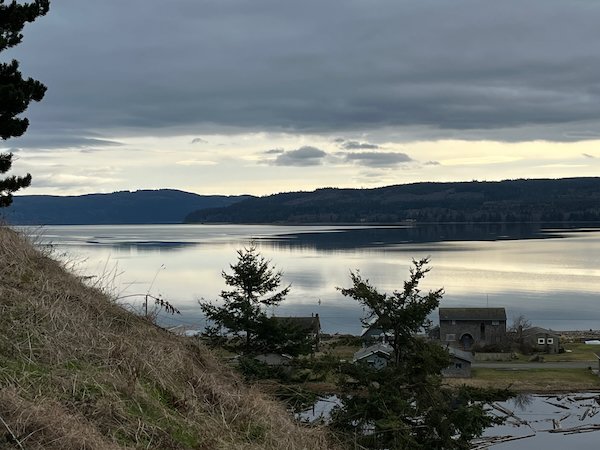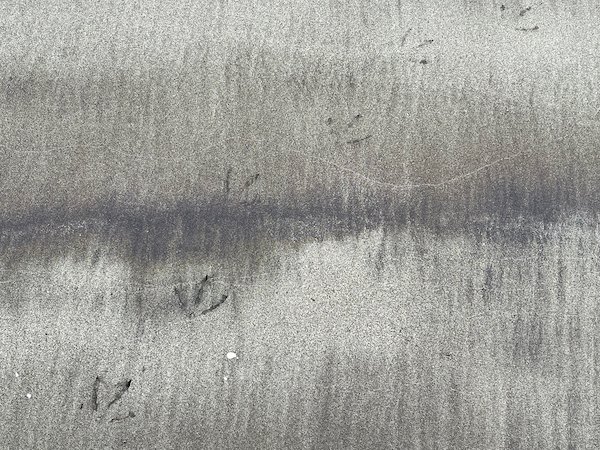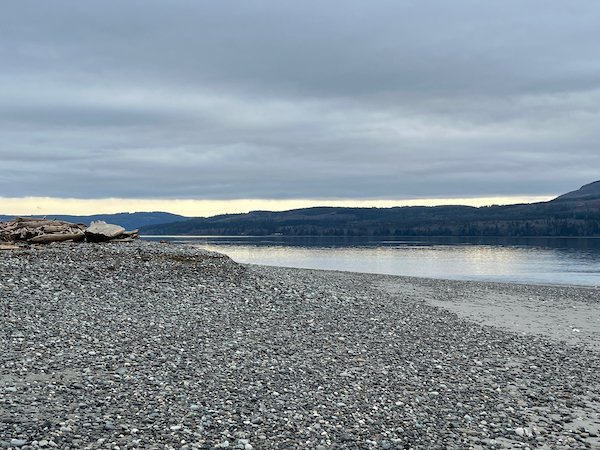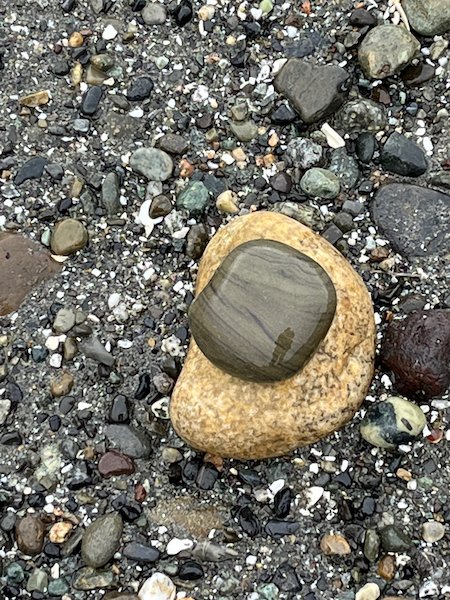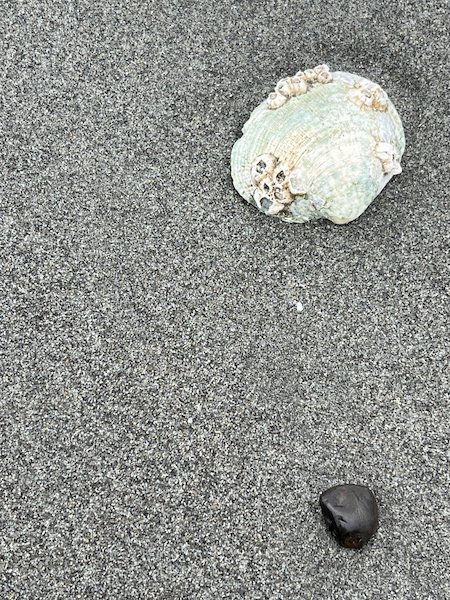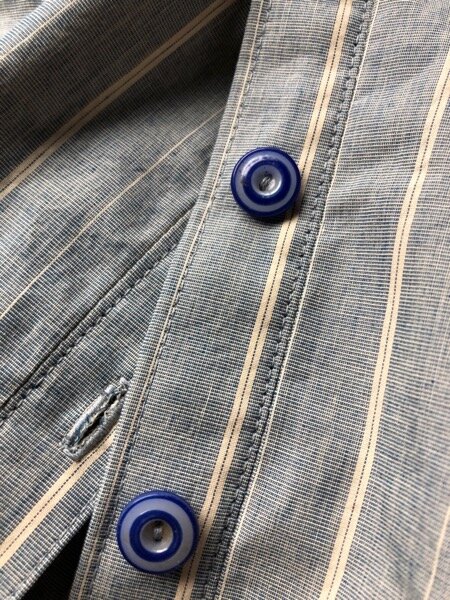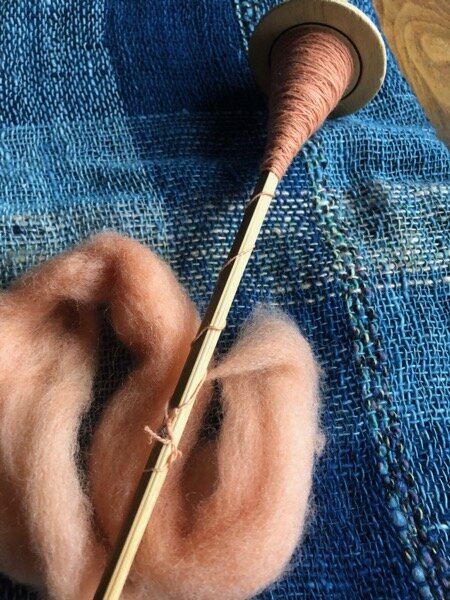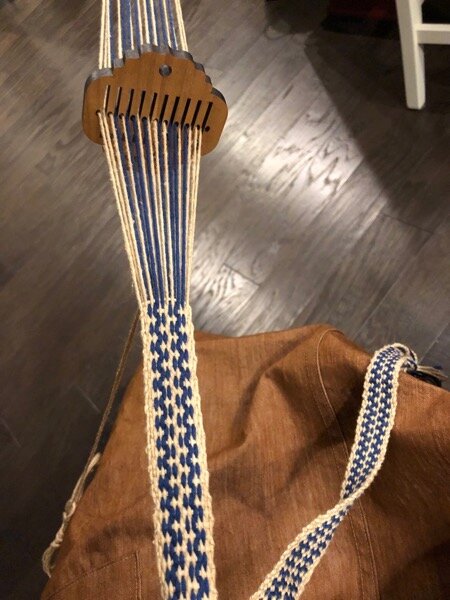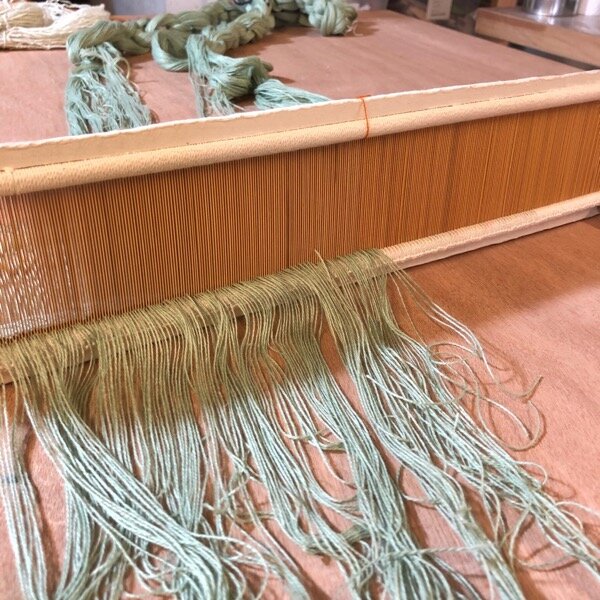I used to think that as an artist, I needed to DO something when I saw and felt a beautiful or powerful scene. That I needed to make art from that specific view or immersion or feeling.
But now I know that it’s more important to just be here with whatever is going on, to pay attention with all senses, which today felt like listening.
At some points, it was actually sound-focused, as when I reached the outermost curve of the point, and the gentle waves approached from my right, passed in front, and continued to my left - a wraparound sound of sea caressing small stones.
Or when I heard a distant peeping on the water, higher than gulls’ voices, and could see lots of tiny bird shapes in the distance. The app on my phone suggested they are Marbled Murrelets, a few of whom I did see close enough to recognize. Yes, they are as sweet looking as their names sound.
self portrait in wet rock - this one almost came home with me - those lines!
Generally it was just a form of attention, the sounds joining the light on water, the shapes in the sand, the language of the tide and the shore, and I listened to see what it might teach me.
the color and texture of the sand are striking me now, whereas when I made the picture it was a neutral ground for the shell and stone
In addition to reminding me that I don’t have to do anything ‘with’ this (but who can resist taking pictures when the colors and textures and shapes are so cool), the teaching today was that wherever I am is the view that matters. I’m often seeing the bay from up the hill, and thinking oh I have to get down there! But the truth is, I can only see the angle of light and reflection, for example in the first image, from just that point on the hill. So I stopped there long enough to appreciate that this view is unique to this spot, before continuing on. There’s some broad lesson in there, that the view from where you are now is unique and most important. It makes me slow down, which has to be a good thing.
I can’t claim to understand the heiroglyphic messages in the beach debris or the designs of rocks, but I have a priority these days of listening to wise language, whether I know what it means or not.
bonus spindle content, with green rocks to swoon over
